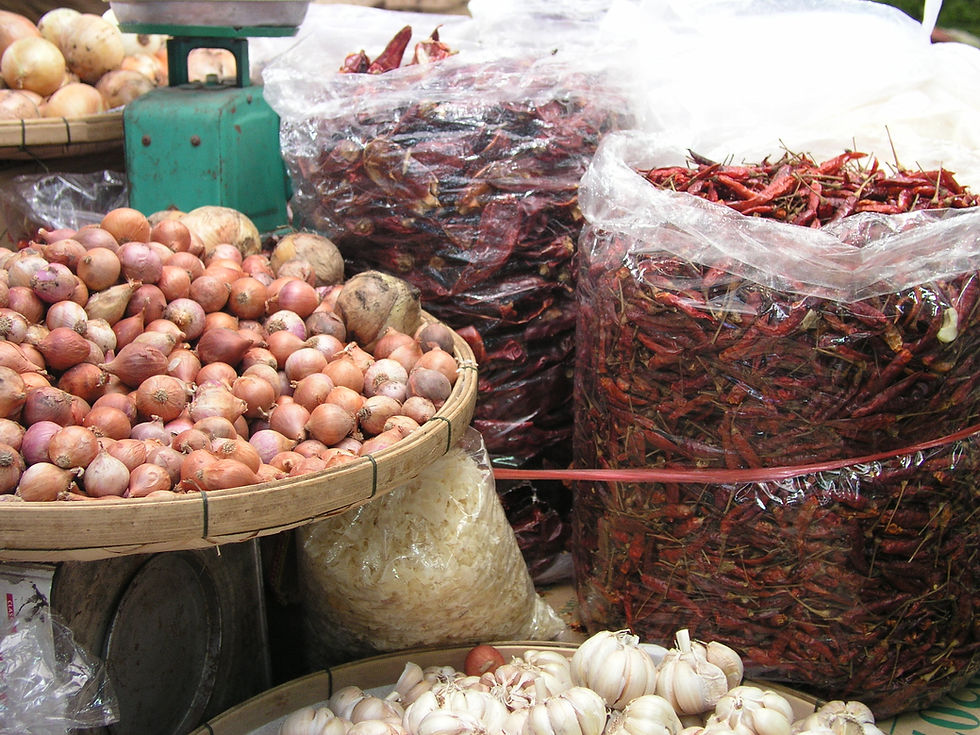The 7 tastes of a Lao meal
- Odara
- Nov 22, 2020
- 2 min read
Updated: Jan 2, 2022

Lao language describes seven tastes: salty (khem), sweet (van), sour (som), bitter (khom), umami (noua), spicy (phet) and astringent (fat). In the western countries, the last two are classified as sensations rather than tastes. An ideal meal will include a combination of all the tastes to which a multitude of flavors should be added. In Lao cuisine, the flavors come from fresh herbs rather than spices. The salty taste is usually obtained with fish sauce and unfiltered fish sauce (pa dek) rather than salt. The sweet taste is obtained by adding cane or palm sugar. The sour taste comes either from lemon, tamarind, sour plum (mak kok) or from a fermentation process. The bitterness of some dishes is due to the use of plants or bile. Chilies are used fresh, dried or powdered to spice up dishes. The umami taste can be increased by adding monosodium glutamate or unfiltered fish sauce. And finally, astringency is most often derived from unripe fruit.
A Lao proverb says: "It is better to eat bitter than sweet". This might explain why the plate of unseasoned vegetables will often include bitter plants. The search for bitterness and astringency may seem strange, but in a western meal, these two tastes often return not in the dishes but in the drinks. For example, the bitterness of beer and the astringency of wine.
Modern Lao cuisine uses a lot of monosodium glutamate (MSG). You can add ¼ to ½ teaspoon of MSG in every dish.
The seasoning in this blog is given as an indication but is suitable for a western palate. The spoons can have different sizes, those we have used have standard volumes of 15 ml and 5 ml, for 1 tablespoon and 1 teaspoon respectively. People of South Laos tend to eat much more salty and spicy food than people of the North.


Comentarios